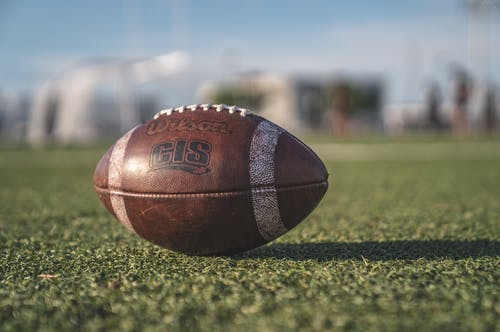Players inherently know that they assume the risk of a long-term disability which could sideline their sports career, but imagine the peace of mind these players would have with appropriate insurance coverage in place.
Ahead of the fall season, some college coaches’ off-field comments have drawn attention to the changing landscape of college athletics.
Some say the exorbitance of their salaries notwithstanding, coaches are in the unique position to further drive the meaningful change which began in 2021 regarding how players can be adequately compensated for their name, image and likeness (NIL). In a precedent-setting decision, the United States Supreme Court unanimously sided with former college players in American Athletic Conference et al. v. Alston et al., in a longstanding dispute with the National Collegiate Athletic Association (NCAA) about compensation and academic benefits.
This change can, and should, extend to providing disability insurance and stronger health benefits for college players whose illnesses and injuries can last a lifetime. The coaches who can bring this new mentality and real protection to the forefront of the dialogue could truly continue to demonstrate how to lead by example, both on and off the field.
Following The Money
College sports is clearly on the rebound from the pandemic, with basketball and football being the biggest draws. Sportico reported that the NCAA made a record $1.16 billion in 2021, with more than 85% generated during March Madness basketball.
The highest grossing conferences are the Big Ten and Southeastern Conference (SEC). According to AthleticDirectorU.com, each school in the conference generates more than $35 million in annual athletic revenue. The average school profits by more than $8 million, while those in the SEC and Big Ten earn nearly $20 million in just football profit annually.
A brief look at the highest-paid college football coaches further amplifies the notion that sports can withstand nearly any economic turmoil – even when higher education itself is in the red.
Consider the salaries of five of the highest-paid college coaches, who all earn at least $9.5 million per year. The nearly $50 million they collectively earn is admirable, earned by each, and certainly well deserved. College coaches make seven-figure salaries and continue to sign favorable multi-year contracts while their college players get no such guarantees and generally have no career-ending or drop in draft protection disability insurance.
This dichotomy was not lost on Jerry Brewer of The Washington Post, who covered the SEC Spring Meetings in May and June of this year. Brewer’s perspective underscored the notion that coaches had always been in a position to use “their influence to persuade their presidents, their conference commissioners and the NCAA to start forging a new, more sensible path,” when it came to regulating players’ rights and compensation. “Now the lucrative con of big-time college sports is fraying.”
Following the decision in Alston, the NCAA’s interim NIL rules are evolving, especially in the absence of a much-needed federal legislative framework. If coaches can successfully convince NCAA leadership to adapt to and reasonably regulate the ways players monetize their college performance, they might further enhance their status as truly inspiring leaders, both on the field and in the public’s eye.
Post-Game Protection
Compensation is not merely tied to paychecks, bonuses and salaries. As full-time employees of their respective schools, coaches receive health benefits including life insurance as well as short and long-term disability insurance – perks their college players do not receive, though they assume tremendous physical risk.

Currently more than 480,000 compete as NCAA athletes, and just a select few within each sport move on to compete at the professional or Olympic level. Football exemplifies a survival of the fittest-style competition when it comes to professional sports careers.
The NCAA notes that of its 16,380 eligible college football players, 254 players were chosen in the 2019 NFL draft. This represents all draft picks for the year. Despite the excitement of being drafted, the draft is not a guarantee of actually getting playtime, and it is common knowledge that most football professional athletes’ careers do not last past five years. The options to protect themselves from sickness and injury for the long-term while in college are currently seriously limited.
One route for our college future draftees rider is to purchase a rider called Loss of Value (LOV) insurance, tied to permanent total career ending disability insurance from Lloyds of London. LOV is the little-known rider designed to protect the future of elite, first, second, or third through seventh-round draft picks. LOV specifically for college athletes covers a student athlete’s anticipated rookie contract value. Universities can pay for the coverage or they can arrange for the player or his family to purchase LOV insurance riders attached to permanent total disability policies, which kick in to supplement that athlete’s loss of total contract value.
LOV insurance is not designed to protect athletes from permanent total disabilities, but is purchased as a rider along with permanent total disability coverage for college players and professionals along with free agents. Though all football draft picks in 2019 came from the NCAA, the recruitment rate was only 1.6%. LOV generally benefits athletes projected as top round picks that fall in or out of the draft due to accident or injury.
An LOV rider attached to a permanent total disability policy from Lloyds is a great option for top prospects. So if we keep the focus on just football, how can the other 16,000 players who might not have the same prestige – from the 300-pound center whose shoulders get roughed up with each snap, to the running back who is just one bad tackle away from paralysis? How do we protect against long-term illnesses or injuries sustained during their college years?
Similar questions can be asked for the hundreds of thousands of other college players in marquee sports, like basketball, hockey, and baseball. They are all generally on their own when it comes to career-ending injuries or disability insurance. Those who can leverage their notoriety and education beyond their college careers are in better positions than those who cannot make that cut, even after sacrificing their bodies.
Based on the outcomes of the SEC meetings, there seems to be the possibility that more thoughtful personalities can emerge. Some noteworthy examples come from younger voices like University of Missouri’s football coach Eli Drinkwitz to more seasoned ones, like NotreDame’s men’s basketball coach Mike Brey.
As far-fetched as it may initially sound, consider if every Division 1 coach across all sports pledged a small fraction of their gross annual salary into a fund that would be reserved to cover the cost of severe and long-term disabilities for their athletes. That money could be used to support those players from serious injuries or illnesses and as a thank you for pushing their bodies to their physiological limits in an effort to win titles for these same coaches – and their 1.6% own chance of achieving a career in sports.
It is merely an idea, and one that hasn’t been vetted but if each college coach demonstrated this commitment to their players, it could inspire a different level of dedication. Players inherently know that they assume the risk of a long-term disability which could sideline their sports career, but imagine the peace of mind these players would have with appropriate insurance coverage in place, and the knowledge their coaches were trying to protect them both on and off the field.


Join the conversation!